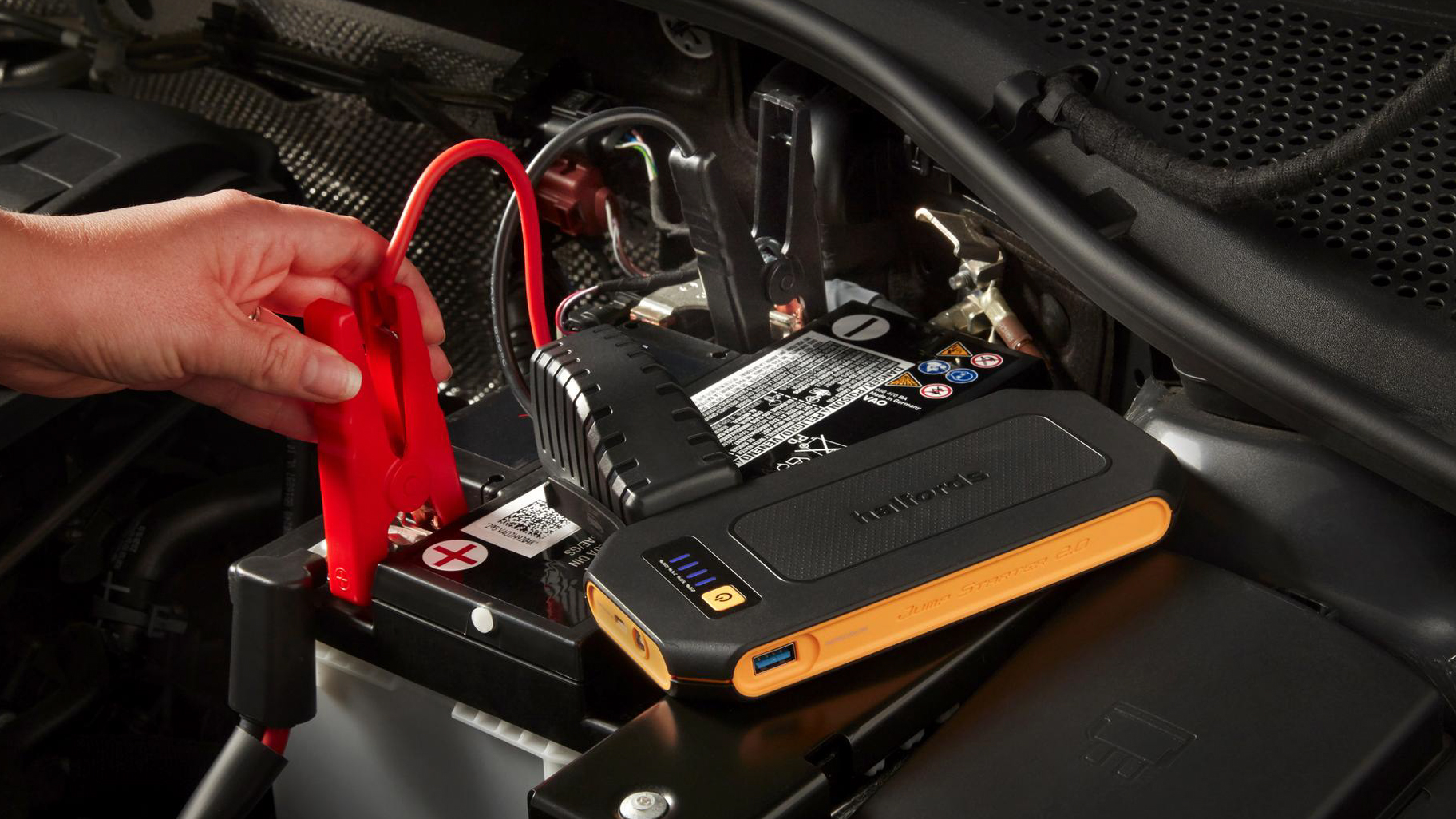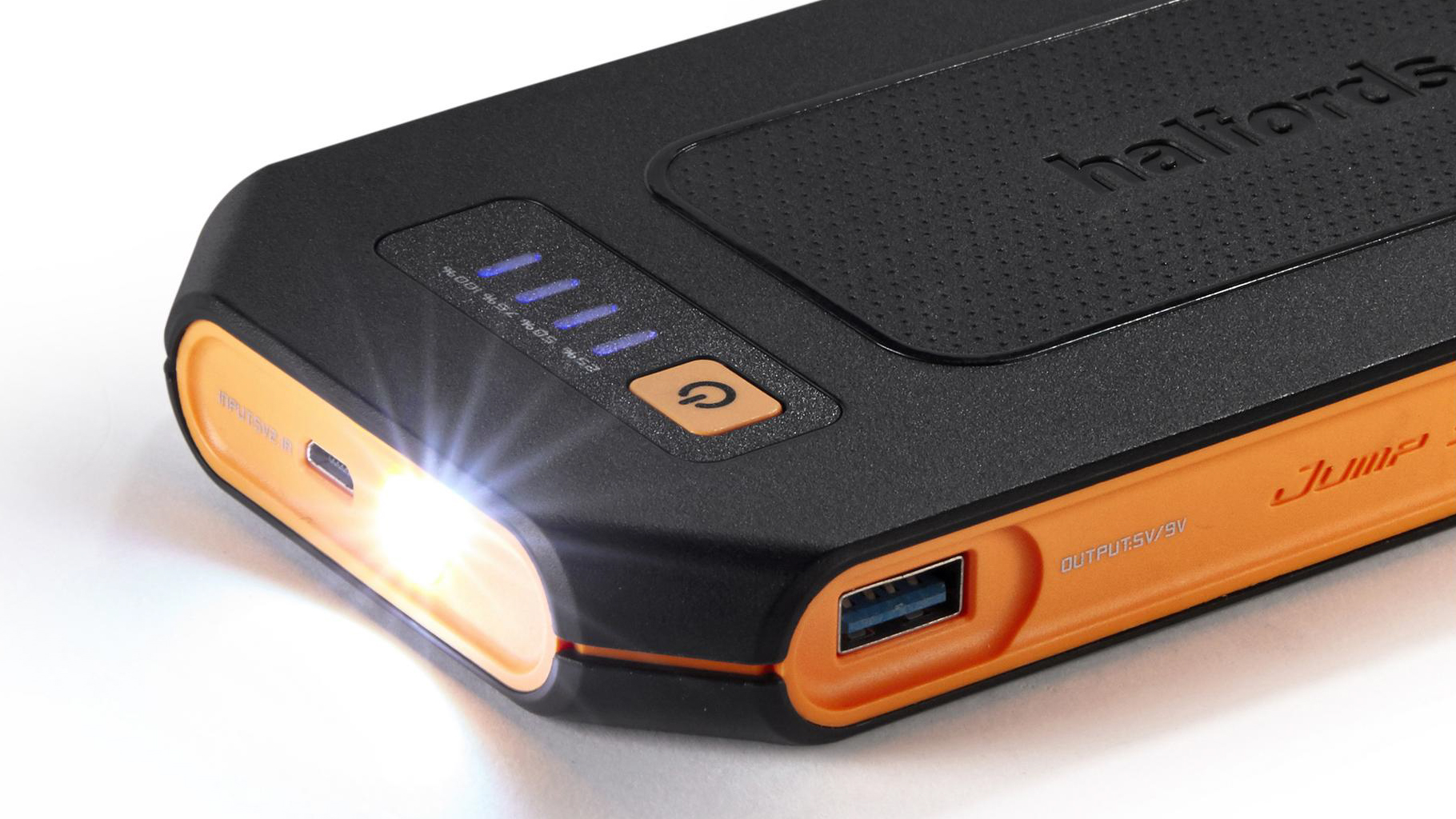Halfords Advanced Lithium Jump Starter review: A portable power bank for your car
Powerful enough to start your car, small enough to fit in the glovebox


A powerful and portable jump starter that you shouldn't leave home with out. It'll even fit in your glovebox and charge your phone too.
-
+
Compact design
-
+
Easy to use
-
+
Baked-in safety system
-
-
Short leads
-
-
A purchase you might never actually use
Why you can trust T3

Instead of connecting jump leads or lugging a heavy old-fashioned jump starter out of the garage, portable jump starters with powerful lithium batteries have quickly become the go-to method of starting a car with a dead battery.
At their smallest, these starters are around the size of a large power bank – the kind of device you’d normally use to charge up a smartphone – yet have the power to restart your car. Many of the best jump starters also have USB ports or charging up other devices, and an integrated LED torch to help you out in the dark.
For this review, we have the Halfords Advanced Lithium Jump Starter, and specifically, this is the model designed to work with petrol and diesel engines up to two litres in capacity. It is priced at £60. If your vehicle has a larger engine, Halfords also sells a version that works with cars up to three litres, and that is priced at £85.
- Halfords Advanced Lithium Jump Starter – Up to 2L – buy now for £60
- Halfords Advanced Lithium Jump Starter – Up to 3L – buy now for £85
Halfords Advanced Lithium Jump Starter review: Hardware and Design

As we said earlier, jump starters like this look a lot like portable power banks, or the type of battery you’d use to charge your phone or power a laptop. In fact, at just 6,000mAh, the capacity of this jump starter is lower than many power banks, but with a peak current of 300 amps, it can easily get your car started.
With a solid plastic design, the portable battery starter will easily fit in your glove box, and even in a coat pocket. It has a micro USB port for charging up its battery, a USB-A port for giving power to devices like smartphones, and a special port protected by a spring-loaded cover for connecting the included jump leads.
These red and black leads are fitted with clamps for attaching to your battery and car at one end, and a control unit that slots into the jump starter at the other. The control unit has a pair of lights – green to say the starter is ready to go, and red to warn that something is wrong with the way it is connected to your car.
Halfords Advanced Lithium Jump Starter review: How it works

The benefits of using a jump starter like this instead of a pair of jumper cables attached to the battery of a second vehicle, is that the starter has safety measures in place to prevent sparking, which could lead to a fire or explosion. It also prevents the user from activating it when it is either connected incorrectly, or when there is a fault with the battery of the car you are trying to start (other than it being out of juice, of course).
Get all the latest news, reviews, deals and buying guides on gorgeous tech, home and active products from the T3 experts
To use the jump starter, attach the cables to the unit itself, which then enters a standby mode where it is primed and ready to use, but only for 30 seconds before switching back off again. Now attach the red clamp to the positive terminal of your car battery, and attach the black clamp to a substantial piece of exposed metal on the car. Although the instructions ask for unpainted metal, we found much of our car’s engine bay was fine to use, such as the metal of the front wings and bonnet.
The cables are quite short, so you might want to plan where the black clamp will attach first, before attaching the control unit to the starter itself. Once both clamps are attached correctly, the green light on the control unit should appear to say everything is correct and the starter is ready to work.
If the clamps are attached incorrectly, a red light will shine and an alarm will sound. We appreciate this feature, as it helped us understand that we weren’t going to cause any damage to our car, the starter, or ourselves. We also found that there is no shock produced at all when connecting the jump starter to the battery.
With everything connected, simply start your car in the normal way. Once the engine starters, you can remove the black clamp from the metal, then the red clamp from the battery terminal. Make sure you do so in that order. Leaving your car running for a few minutes will recharge the dead battery.
Halfords Advanced Lithium Jump Starter review: Additional features
Portable jump starters like this tend to include a few extra features. In this case, there is a USB-A port for charging devices like smartphones, and an LED torch. This is activated with a long press of the jump starter’s power button, and switched off with a second, short press.
On Halford’s jump starter designed for larger three-litre engines, the torch can be cycled through being on, strobing, signing SOS with Morse code, and off with subsequent presses of the power button.
A single short press of the power button shows how much charge is left in the jump starter’s battery. This is shown as a percentage using four blue LEDs. The jump starter battery must be full before it is used, and a full charge from empty takes two hours.
For its ease of use and portable design – plus its ability to get you out of a difficult situation in just a minute or two – we think this portable jump starter is well worth carrying in your car. You might never use it, but on the day you do you’ll be hugely grateful for your own foresight.
- Halfords Advanced Lithium Jump Starter – Up to 2L – buy now for £60
- Halfords Advanced Lithium Jump Starter – Up to 3L – buy now for £85
Liked this?
- Best dash cam: top car dash cams tried and tested
- Best sat nav: including TomTom, Garmin and more
- Best car seat: keep your baby or toddler safe with these infant and booster seats
Alistair is a freelance automotive and technology journalist. He has bylines on esteemed sites such as the BBC, Forbes, TechRadar, and of best of all, T3, where he covers topics ranging from classic cars and men's lifestyle, to smart home technology, phones, electric cars, autonomy, Swiss watches, and much more besides. He is an experienced journalist, writing news, features, interviews and product reviews. If that didn't make him busy enough, he is also the co-host of the AutoChat podcast.
